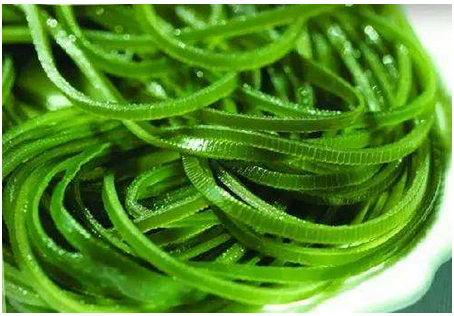PRODUCTS
Contact us
+86-731-86207286
Company:ChangSha Phyto Nutrition Inc.
Address:Xingsha HighTech & Development Zone Changsha China.(410100)
Email:sales@phyto-nutrition.com
Bladderwrack Seaweed Kelp Extract
time:2017-03-04 author: phyto-nutrition

Bladderwrack Seaweed Kelp Extract
· Latin Name: Fucus vesiculosus
· Active Ingredient: iodine
· CAS No.: 92128-82-0
· Test method: TLC
· Specifications: 60:1|10% Iodine
Product Description:
Kelp Extract Profile
· Product name :Bladderwrack Seaweed Kelp Extract
· Latin name: Laminaria Japonica
· Parts used: whole plant
· Active Ingredients: iodine
· Specification: 10% Iodine
· Test Method: HPLC
· Appearance : Brown fine powder
Fucus vesiculosus Description
Kelps are large seaweeds (algae) belonging to the brown algae (Phaeophyceae) in the order Laminariales. There are about 30 different genera. Because of its high concentration of iodine, brown kelp (Laminaria) has been used to treat goiter, an enlargement of the thyroid gland caused by a lack of iodine, since medieval times. Along with other sea vegetables, kelp is nature's best source of iodine.
Discovered in 1812, this seaweed was the original source of iodine, and was used extensively to treat goiter, a swelling of the thyroid gland related to insufficient iodine. In the 1860s, it was claimed that Bladderwrack, as a thyroid stimulant, could counter obesity by increasing metabolic rate, and, since then, it has been featured in numerous weight-loss remedies.
Official Latin Name: Fucus vesiculosus
Bladderwrack is also known by the names Black Tang, Rockweed, Bladder Fucus, Seawrack, Sea Oak, Black Tany, Cut Weed, and Rockwrack. Bladderwrack is a type of seaweed found on the coasts of the North Sea, the western Baltic Sea, and the Atlantic and Pacific Oceans. A common food in Japan, it is used as an additive and flavoring in various food products in Europe. Bladderwrack is commonly found as a component of Kelp tablets or powders used as nutritional supplements. It is sometimes loosely called Kelp, but that term technically refers to a different seaweed. Primary chemical constituents of this plant include mucilage, algin, mannitol, beta-carotene, zeaxanthin, iodine, bromine, potassium, volatile oils, and many other minerals. The main use of Bladderwrack (and other types of seaweed) in herbal medicine is as a source of iodine, an essential nutrient for the thyroid gland. Bladderwrack has proved most useful in the treatment of underactive thyroid glands (hypothyroidism) and goiter. Through the regulation of thyroid function, there is an improvement in all the associated symptoms. Where obesity is associated with thyroid trouble, this herb may be very helpful in reducing the excess weight. It has a reputation in helping the relief of rheumatism and rheumatoid arthritis, both used internally and as an external application upon inflamed joints. A chemical constituent of Bladderwrack called alginic acid swells upon contact with water; when taken orally, it forms a type of "seal" at the top of the stomach, and for this reason is used in several over-the-counter preparations for heartburn. The same constituent gives Bladderwrack laxative properties as well. Other proposed uses of Bladderwrack include treating atherosclerosis and strengthening immunity, although there is no scientific evidence at present that it works for these purposes.
Commercial kelp production in China
Laminaria japonica, the important commercial seaweed, was first introduced into China in the late 1920s from Hokkaido, Japan. Yet mariculture of this algae on a very large commercial scale was realized in China only in the 1950s. Between the 1950s and the 1980s kelp production in China increased from about 60 to over 250,000 dry weight metric tons annually, making China the largest producer of Laminaria.
Benefits
· Healthy Thyroid
· Energy Levels
· Reproductive Health
· Cancer Prevention
· Remove toxins that are in the body
· Healthy Hair and Nails
Applications
· health food field, be widely used in food additives industry, which can be added into the dairy, beverage, health care products, pastries, cold drinks, jelly, bread, milk and so on;
· cosmetic field, it is a kind of water-soluble polymer natural extracts with sntiphlogistic sterilization effect, as a new type of high moisturizing instead of glycerin;
· pharmaceutical field, it is the raw material of new tradition medicine which is often added in kidney products.

